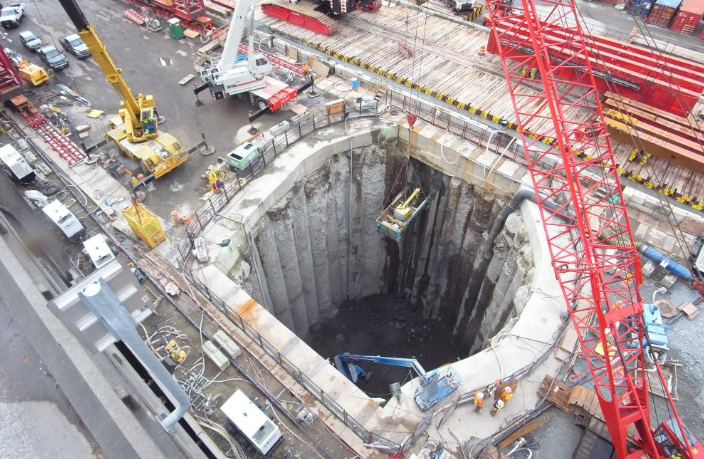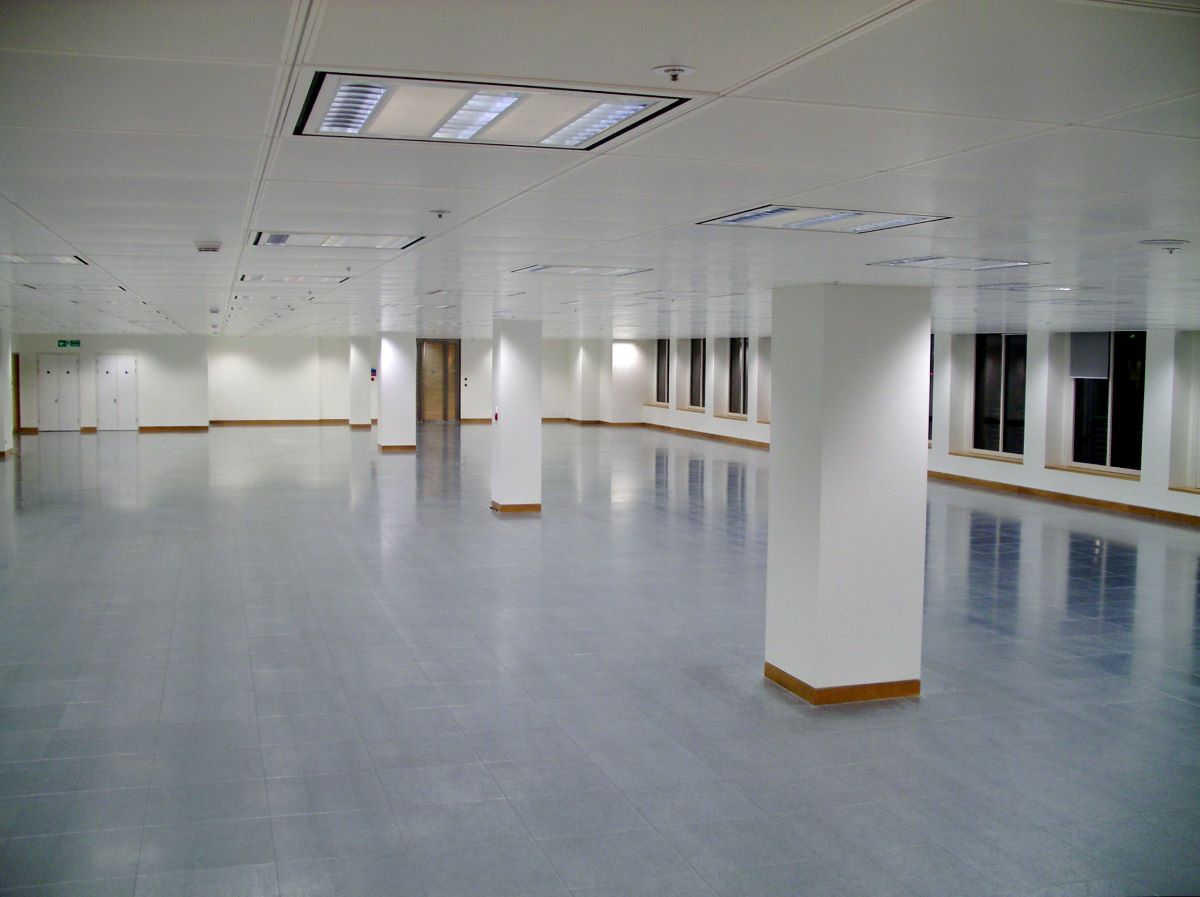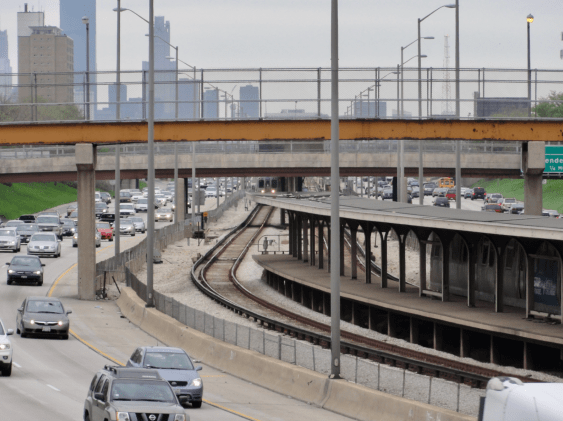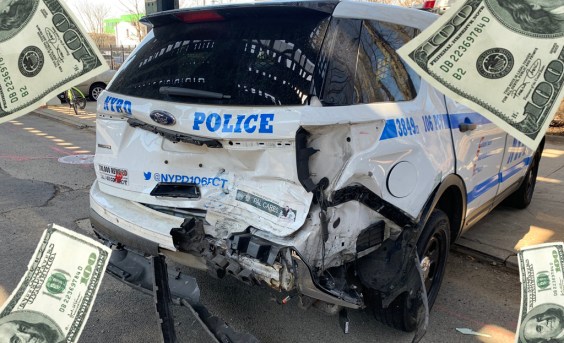Can Seattle Stop Its Highway Tunnel Boondoggle Before It’s Too Late?
2:05 PM EST on January 5, 2015

It's been one year since the world's largest tunnel boring machine, "Bertha," got stuck 120 feet beneath Seattle. Before it broke down, the colossal machine had excavated just 1,000 feet of the two-mile tube that's supposed to house a new, $3.1 billion underground highway to replace an aging elevated road called the Alaskan Way Viaduct.
Bertha hasn't budged an inch in the 12 months since. Meanwhile, the bad news keeps on piling up.
Right now, the state's contractor is busy building a second tunnel down to the machine, so that parts can be removed, repaired, and replaced. In order to keep the second tunnel dry, construction crews have been draining the water table. This work has dangerously destabilized the very elevated highway the tunnel is supposed to replace, and one of the city's historic neighborhoods -- Pioneer Square -- is actually sinking as well.
As David Roberts detailed in a recent Grist story, the project could impose billions of dollars in cost overruns on the public. Nobody is certain the machine can be fixed, or if it does get fixed, whether the same problem won't occur again, farther down its path. In December, the deep-bore tunnel ran away with the voting for Streetsblog's "Highway Boondoggle of the Year" award.
If there's anything positive to emerge from the current mess, it's that local advocates like Cary Moon, who warned against building the tunnel in the first place, are commanding attention again. Moon recently took to the pages of the local alt-weekly, the Stranger, to argue that in light of the tunnel project's spectacular, slow-motion meltdown, the city should explore other options.
We reached out to her to learn more.
This is a pretty big disaster, it sounds like.
This project identified a lot of risks at the beginning of the process, but the political commitment to it was already high enough at that point that no one really paid that much attention, except for several of us.
They treated us like we were gadflies instead of pointing out honestly and clearly what was probably going to happen. It’s frustrating because all this was known then but no one was listening.
What I keep wondering about is, potentially what are the long-term impacts on Seattle, financially? Are people talking about that? Does anyone have a good sense of how big and long-lasting of a problem this is going to be?
Nobody has any good numbers or anything but I think everyone is worried about it. I think this is how mega-projects spin out of control. When you run into a problem and instead of stopping to consider your options, you just keep spending whatever you need to be spending to keep going. And [the state's contractor] Seattle Tunnel Partners would like to see that happen. They just want to keep going and spend money and get paid later. But I think all of us at the city, county and state level need to stop and think about the impact of that and consider alternatives.
Ignore sunk costs for a minute, you have to think about what are your options from here forward: what can you afford and what’s the right thing to do long-term? That’s what we need to be doing now.
Can you give me an overview of the politics of the situation? Who has their hand on the wheel in all of this?
That is such a good question. I’ll give you my opinion but it’s complicated. So, the city’s mayor, the King County Executive and the governor who cut this deal in 2009, none of them are in office anymore. So the new mayor and the new King County Executive and the new governor all inherited it. At this point, nobody’s stepping up and saying ‘I believe in this project, I’m going to see it through to the end.’ They’re all just sort of watching, which is good because that means they’re probably questioning what’s going on.
It would be awesome if the governor and the mayor and the county executive got together and decided, ‘Okay, when are we gonna pull the plug on this project? Let’s stay together on what Plan B is.’ That would be ideal, but I don’t think that’s what’s happening.
I think the people that are driving this project right now are unfortunately the head of WsDOT, Lynn Peterson, working with the contractor Seattle Tunnel Partners. And the people who are questioning it openly are people in the media, people in advocacy positions, some city council members and nobody else is publicly questioning it.
Meanwhile the Alaskan Way Viaduct, an important corridor to downtown that the tunnel was planned to replace, is sinking.
So after [the 2001] earthquake, it sunk some. And then when they started the tunneling operation, it sunk a little more. After the earthquake, they said it can sink six inches before we have to worry. It basically sank five inches over the last eight years. But then in the last two weeks after Thanksgiving, it sank another inch.
So we’re over the six-inch limit, but now they’re saying, ‘Well, it’s more complicated than that.’ There’s this document right now that has all these new limits about how much it can sink and whether it’s a linear or lateral differential – all these new kind of more precise limits on what’s allowed to happen. But they’re right on the edge of they might have to close it for public safety.
Have they talked about what they’re going to do if that happens?
Well, for 10 years we all thought they were going to close it. But now WsDOT’s saying, ‘Well, we don’t really want to close it so we’ll figure out how to reinforce the structure.’ WsDOT’s really motivated to not have to close the viaduct, so they’ll spend the money fixing it if they can.
But that would only be a temporary fix?
Yeah. They know that they can’t make the highway last much longer, but they could prop it up for a couple more years is what they’re thinking.
I think there’s a point where the city will say, ‘We don’t trust you anymore. We think the thing should be closed.’
Could you outline what you think the city should be doing to prepare for the worst.
I think the city has to convince the state, if they have to stop the project, they have to do this Plan B. They have to be together on this because some of the funding is going to have to come from the state.
How much money is left?
There’s probably some money left, let’s say it’s $100 million or $500 million or I hope not zero. I hope there’s something left.
You could do a lot of transit capital improvements and transit service hours with that money. I think that’s the most important thing.
So they could get started on your Plan B tomorrow, basically?
They may have to add more buses, but buying more buses is faster than building a highway. We have this not-quite [bus rapid transit] system, they could basically add some capital improvements to get more dedicated bus lanes and bus priority lanes in other places and basically make that transit service a lot more reliable and fast.
The other part of the solution is we have a fantastic new vision for the downtown waterfront when the viaduct is taken down and as part of that plan, which is at waterfrontseattle.org, there’s a four-lane urban street along the waterfront that’s already designed and engineered and almost shovel ready. If the viaduct had to be closed next week, we could tear it down pretty quickly and rebuild that surface street according to design and engineering that’s already done. It might take a year-plus to do that but the design work’s already done on that.
Editor's Note: In early studies comparing the "deep-bore tunnel" plan to alternatives, the surface street and expanded transit scenario Moon is describing was found to just as effectively manage traffic.
Correction: The article originally said the Alaskan Way Viaduct sank five inches after last year's earthquake. It was actually the 2001 earthquake that caused the damage.
Angie Schmitt is the author of Right of Way: Race, Class and the Silent Epidemic of Pedestrian Deaths in America, and the former editor of Streetsblog USA.
Stay in touch
Sign up for our free newsletter
More from Streetsblog USA
Thursday’s Headlines Turn Up the Heat
Whether you realize it or not, climate change is here, and not just in the form of natural disasters.
Wednesday’s Headlines Are Running on Empty
Fewer commutes to downtown offices means less money to fund transit services, even as money for autocentric infrastructure keeps right on flowing.
What to Say When Someone Claims ‘No One Bikes or Walks in Bad Weather’
Yes, sustainable modes are more vulnerable to bad weather. But that's why we should invest more in them — not less.
Chicago Announces $2M Federal Grant to Address Harms Caused By I-290
The Mayor's Office says the money will fund "improvements for people walking and bicycling on existing streets and paths surrounding and crossing the corridor."
Car Crashes by City Workers Cost NYC Taxpayers $180M in Payouts Last Year: Report
A record number of victims of crashes involving city employees in city-owned cars filed claims in fiscal year 2023 — and settlements with victims have jumped 23 percent, a new report shows.




